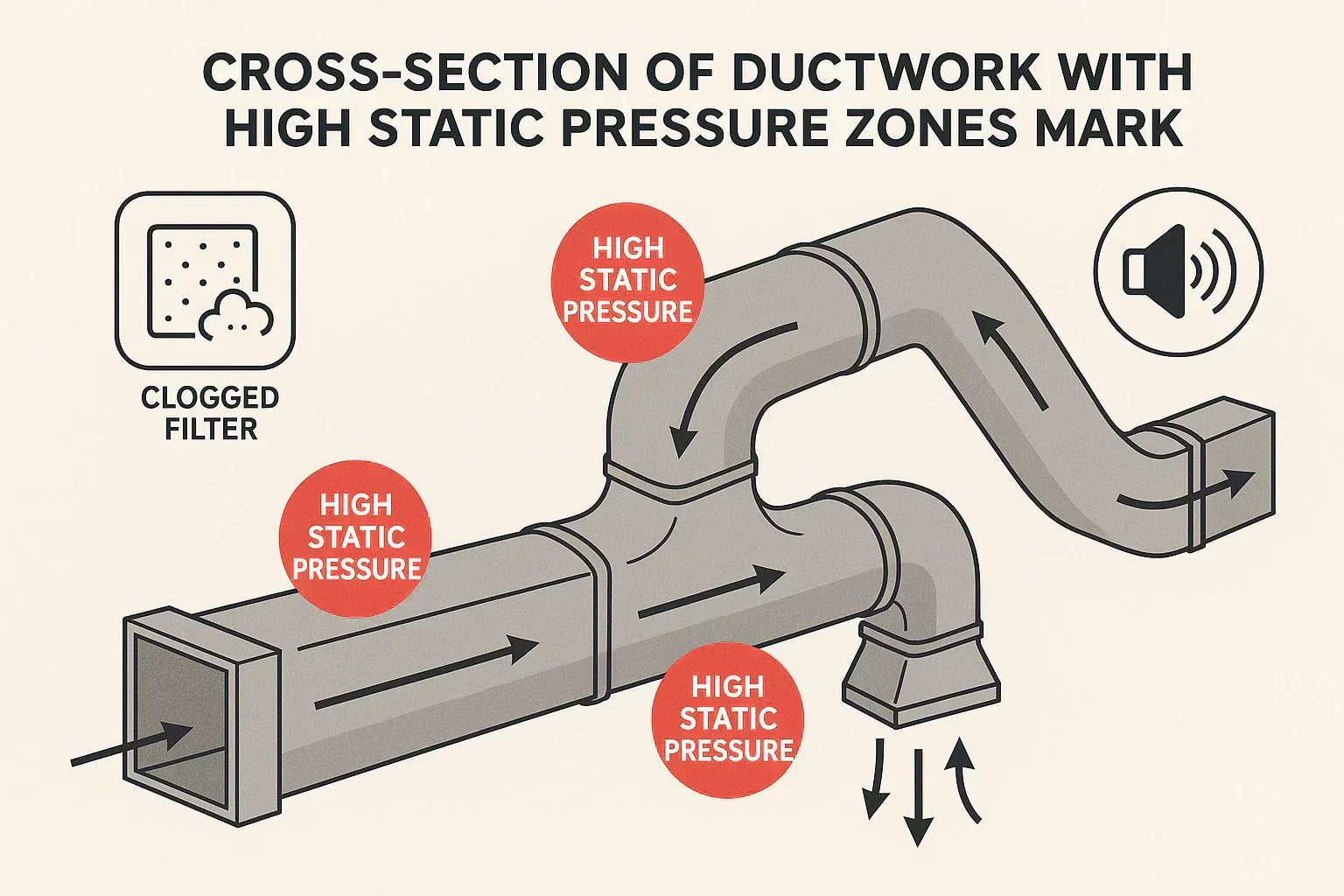Installing a high-efficiency central AC unit? Great. But here’s the hard truth: even the best equipment will underperform—or fail prematurely—if it’s installed incorrectly.
In fact, the U.S. Environmental Protection Agency has found that improper installation can reduce HVAC performance by up to 30%, leading to higher utility bills, poor comfort, and unnecessary repairs.
Let’s break down the most common AC installation mistakes I’ve seen in the field—and how to avoid them to protect your investment and get the comfort and efficiency you’re paying for.
🔗 Related: Top 10 Central AC Units Compared
1. Incorrect Sizing: Too Big or Too Small
A properly sized AC is foundational to performance. Unfortunately, many installers skip the math and rely on guesswork or rules of thumb.
Oversized ACs:
-
Cool too fast, causing short cycling
-
Can’t dehumidify effectively
-
Waste energy and wear out faster
Undersized ACs:
-
Struggle to keep up on hot days
-
Run continuously, driving up energy use
-
Accelerate wear on internal components
The solution? Insist on a Manual J load calculation, which accounts for your home’s square footage, insulation, sun exposure, windows, and more. The U.S. Department of Energy recommends this as the gold standard for HVAC sizing.
2. Poor Ductwork Design and Leaks
Even the most efficient AC unit can’t overcome bad ductwork.
Common duct mistakes include:
-
Undersized or kinked ducts that restrict airflow
-
Leaky connections that let cooled air escape
-
Uninsulated ducts that absorb heat in attics or crawlspaces
Signs of duct issues:
-
Weak airflow at vents
-
Hot and cold spots between rooms
-
High energy bills despite moderate use
Before installation, have your ductwork inspected and pressure tested. According to ENERGY STAR, homes lose 20–30% of conditioned air through leaks in the duct system. Sealing, sizing, and insulating ducts can solve the issue.
3. Skipping Proper Refrigerant Charging
Refrigerant charge directly affects cooling power, energy efficiency, and system longevity. Yet many installers still “eyeball” the charge or guess based on line length.
Charging by pressure alone—or just adding refrigerant without diagnostics—can lead to:
-
Loss of cooling capacity
-
Inefficient operation
-
Compressor failure down the road
The correct method involves measuring superheat or subcooling (depending on system type), checking ambient temps, and referencing manufacturer specs.
This step-by-step refrigerant charging guide from Refcon HVAC lays out the proper process for charging systems accurately and safely—no guesswork involved.
4. Ignoring Static Pressure and Airflow Testing
Think of static pressure as blood pressure for your duct system. Too high, and your AC has to work harder than it should. Too low, and airflow suffers.
Problems caused by high static pressure:
-
Noisy operation
-
Weak airflow from vents
-
Coil freezing
-
Premature blower motor failure
Unfortunately, many installs skip this step. But a proper install includes airflow testing using a manometer or flow hood to verify that the system breathes correctly.
The National Comfort Institute recommends keeping total external static pressure (ESP) within equipment specs—usually around 0.5" WC or less for residential units.
5. Thermostat Placement Errors
A smart thermostat is only as good as its location.
Common placement mistakes:
-
Too close to supply vents
-
Placed near windows, ovens, or heat-producing appliances
-
Mounted in direct sunlight
These locations cause false readings, leading to short cycling or rooms never reaching target temps. For best results, place the thermostat on an interior wall, away from windows and supply ducts, roughly 5 feet above the floor.
HVAC.com has a helpful guide on optimal thermostat positioning that every homeowner (and installer) should review.
6. Inadequate Drainage and Condensate Management
Central AC systems remove humidity from the air, producing condensate that needs to drain properly. But many installs neglect this system—or do it incorrectly.
Signs of poor drainage:
-
Water pooling near the air handler
-
Musty odors or mold growth
-
AC shuts off due to float switch activation
Key steps to prevent issues:
-
Slope drain lines correctly (1/8" per foot)
-
Use PVC, not flexible vinyl
-
Install float switches to shut off the unit if the pan fills up
This is one of those small details that can prevent thousands of dollars in water damage.
7. Not Pulling a Deep Vacuum
Before refrigerant is added, the system needs to be vacuumed to remove air and moisture from the lines.
Skipping this step (or doing a shallow vacuum) leads to:
-
Acid buildup in the compressor oil
-
Reduced efficiency
-
Early compressor failure
A proper install pulls a vacuum to at least 500 microns, verified with a micron gauge. As Yellow Jacket explains, even a small amount of moisture can damage performance and shorten system life.
8. Skipping Permits, Code Compliance, or Inspections
Cutting corners on local code compliance might save money upfront—but it can cost you big later.
Risks include:
-
Voided equipment warranties
-
Fines from local authorities
-
Insurance claim denials if something goes wrong
Before installation, make sure your contractor pulls any required permits and schedules post-install inspections (when applicable). It’s not just about legality—it’s about safety and long-term protection.
Final Thoughts from Alex
In my years working hands-on in HVAC, I saw one thing over and over: it’s not always the brand that makes or breaks an AC system—it’s the installation.
An improperly installed central AC will never deliver the efficiency, performance, or lifespan it was designed for. And many homeowners don’t even realize the problem until it's too late.
If you’re planning a new install or replacement, here’s what I’d recommend:
-
Ask your contractor if they do Manual J calculations
-
Request airflow and static pressure testing
-
Confirm refrigerant charging methods
-
Double-check that permits and codes are part of the process
Because when installation is done right, your AC will run smoother, quieter, and more efficiently—summer after summer.
🔗 Read next: How to Maintain a Central AC Unit for Optimal Performance
Alex Lane
Your Home Comfort Advocate







